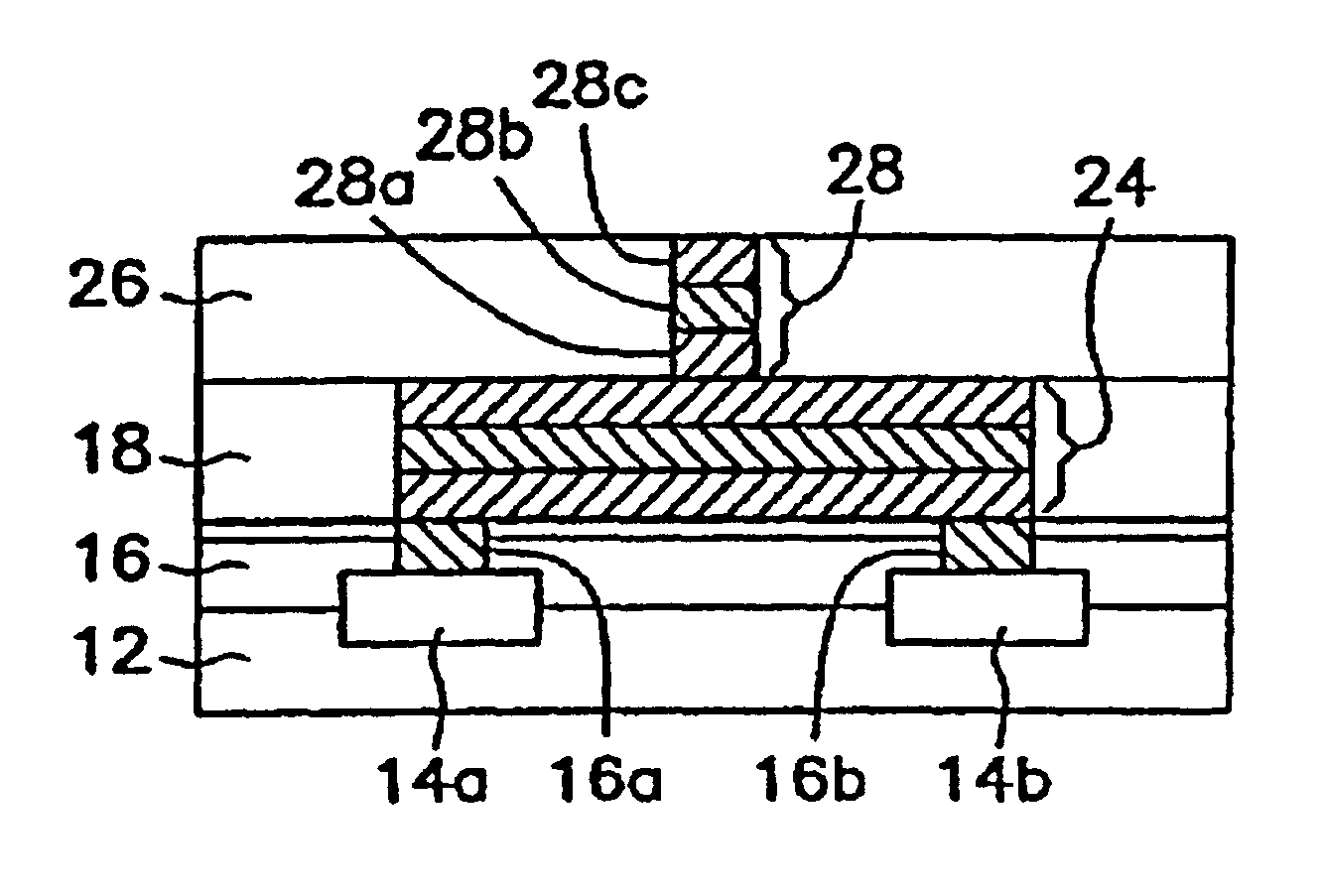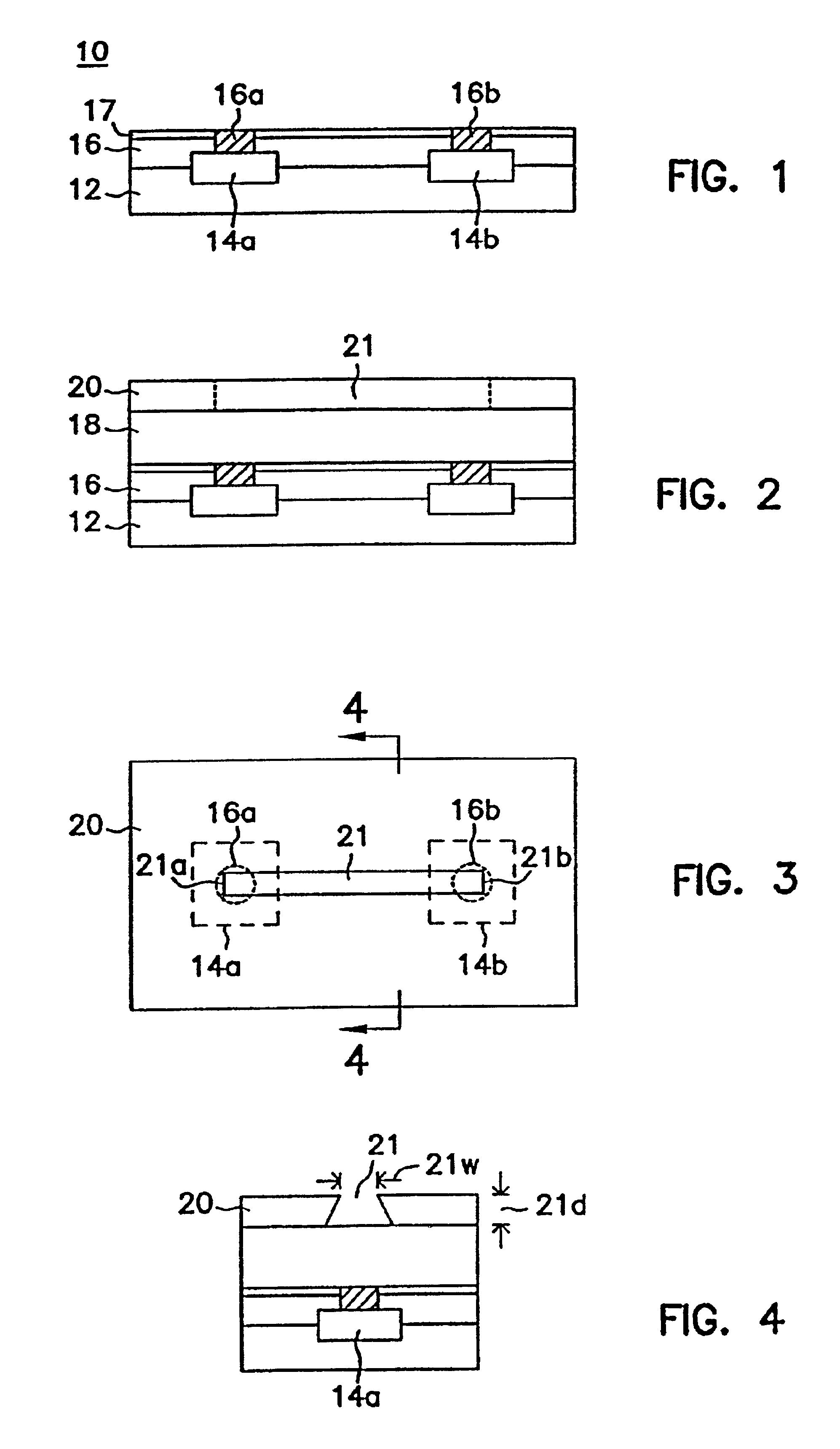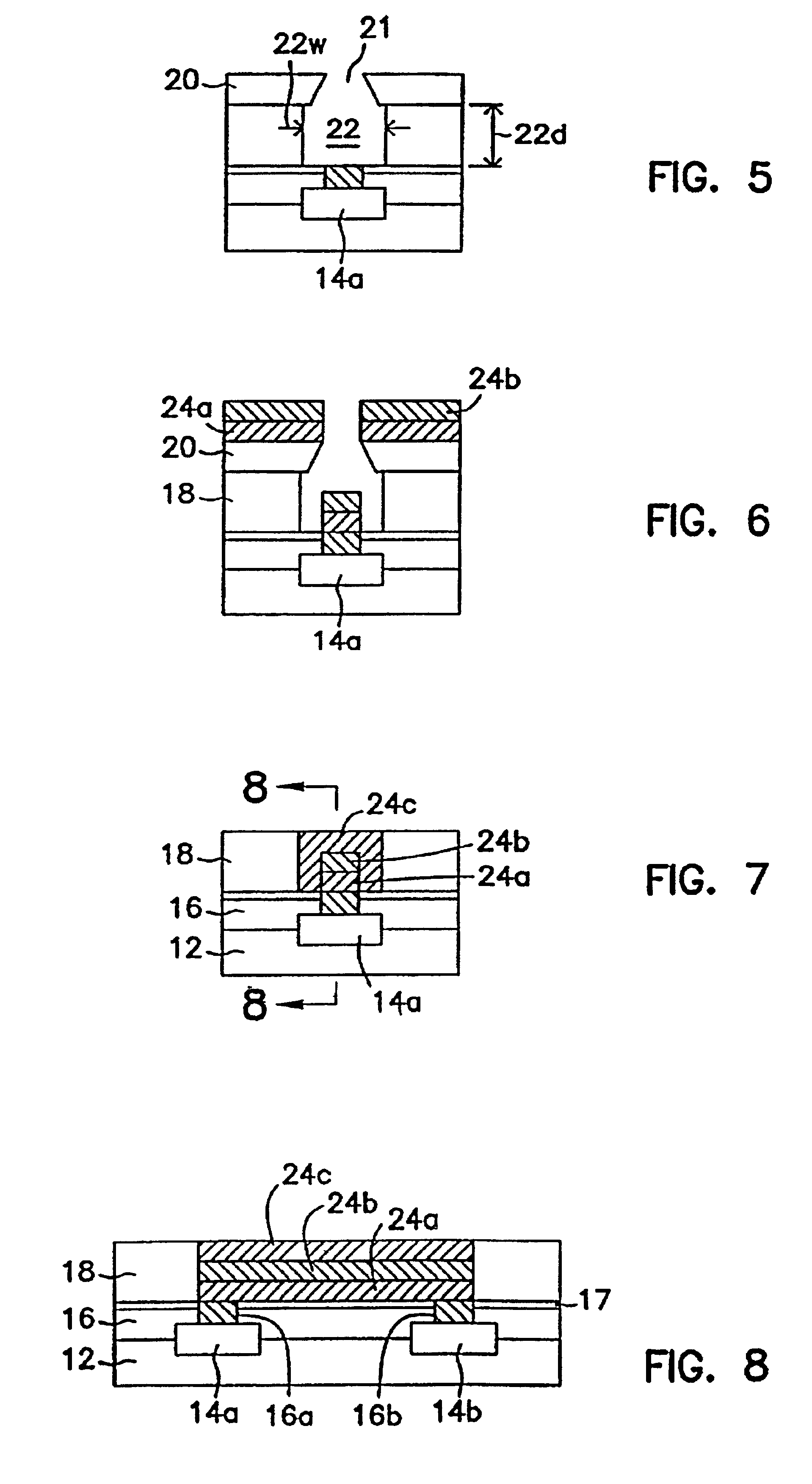Forming submicron integrated-circuit wiring from gold, silver, copper, and other metals
a technology of integrated circuit wiring and metals, applied in the direction of electrical equipment, semiconductor devices, semiconductor/solid-state device details, etc., can solve the problems of inability to planarize, inability to meet the requirements of micron and submicron metallization, so as to preserve the insulative and capacitance-reducing properties of polymeric insulators, reduce the reaction with metals, and increase the conductivity of poly
- Summary
- Abstract
- Description
- Claims
- Application Information
AI Technical Summary
Benefits of technology
Problems solved by technology
Method used
Image
Examples
Embodiment Construction
The following detailed description, which references and incorporates FIGS. 1-10, describes and illustrates one or more specific embodiments of the invention. These embodiments, offered not to limit but only to exemplify and teach the invention, are shown and described in sufficient detail to enable those skilled in the art to practice the invention. Thus, where appropriate to avoid obscuring the invention, the description may omit certain information known to those of skill in the art.
FIGS. 1-9 show a number of exemplary integrated-circuit assemblies, which taken collectively and sequentially, illustrate an exemplary method of the present invention. The method, as shown in FIG. 1, a cross-sectional view, begins with a known integrated-circuit assembly or structure 10, which can be within any integrated circuit, an integrated memory circuit, for example. Assembly 10 includes a substrate 12. The term “substrate,” as used herein, encompasses a semiconductor wafer as well as structures...
PUM
| Property | Measurement | Unit |
|---|---|---|
| width | aaaaa | aaaaa |
| thick | aaaaa | aaaaa |
| width | aaaaa | aaaaa |
Abstract
Description
Claims
Application Information
 Login to View More
Login to View More - R&D
- Intellectual Property
- Life Sciences
- Materials
- Tech Scout
- Unparalleled Data Quality
- Higher Quality Content
- 60% Fewer Hallucinations
Browse by: Latest US Patents, China's latest patents, Technical Efficacy Thesaurus, Application Domain, Technology Topic, Popular Technical Reports.
© 2025 PatSnap. All rights reserved.Legal|Privacy policy|Modern Slavery Act Transparency Statement|Sitemap|About US| Contact US: help@patsnap.com



